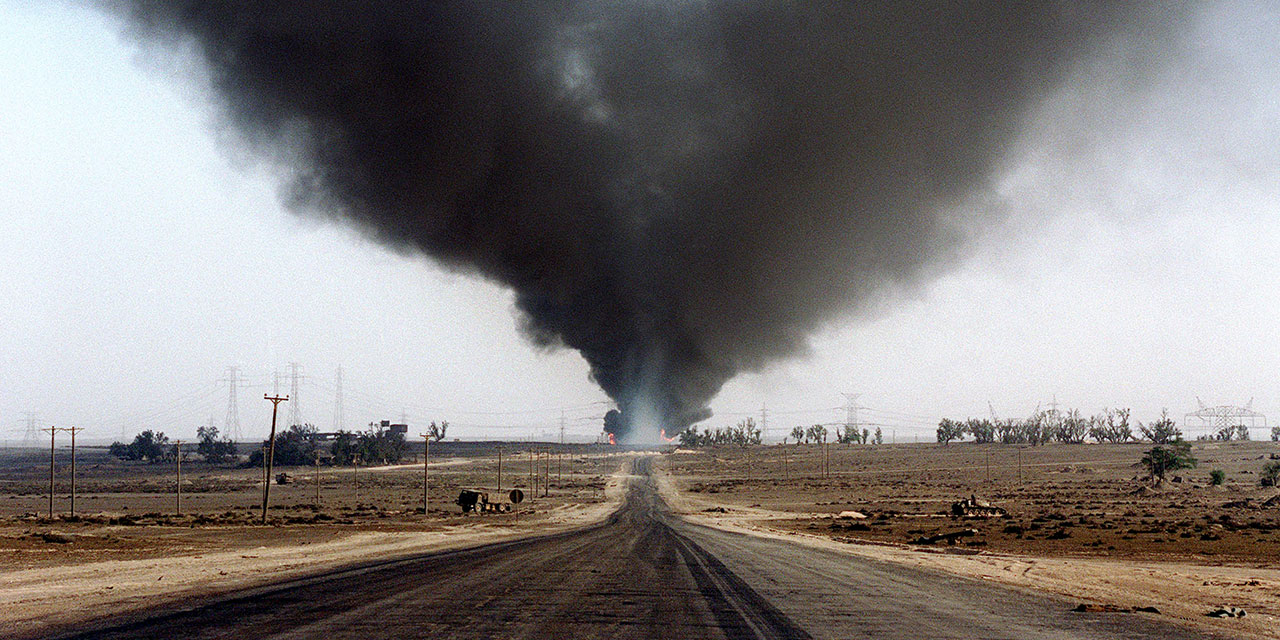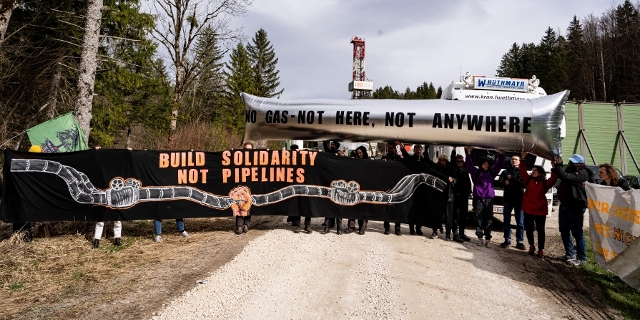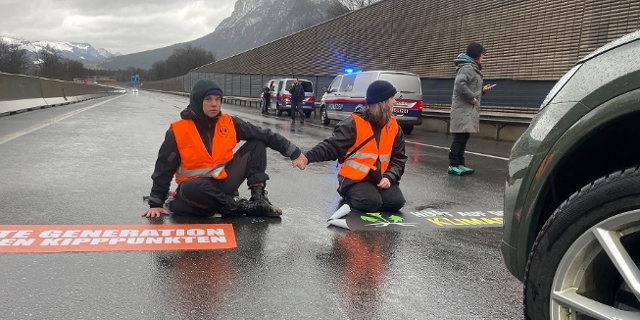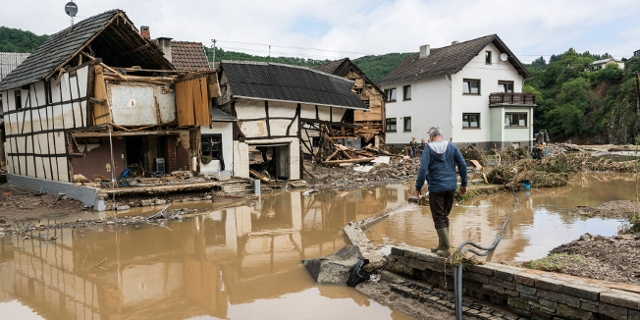The Carbon “Boot Print”: Why quantifying military emissions is a battle, and why it must be won
An interview with Eoghan Darbyshire, a researcher at the Conflict and Environment Observatory in the UK, which aims to increase awareness of the environmental consequences of conflicts and military activities.
Why is there a lack of data on military emissions?
It’s a very complex sector and doesn’t easily fit into standard calculation protocols. It’s also because there’s little incentive or pressure for militaries to report on their own emissions. The few emissions estimates which are provided by militaries are usually huge underestimates and focus only on a narrow element of the military activity, such as fuel use. The overall activities of the military are much broader, so the total emissions are much larger, but reporting is incomplete because of the exemptions militaries have from climate agreements and reporting protocols. Approximate estimates suggest that militaries are one of the biggest single sector emitters, perhaps even above aviation and shipping. In my opinion there’s a huge societal blind spot to this, as both political sensitivities and the research complexity have made it an unattractive topic for climate researchers.
What kinds of things does one have to consider when calculating the carbon footprint of a military
Militaries cover huge geographical areas. They employ millions of people and have legacies that lock in emissions in the future. So, it’s really complicated.
So where do you start?
The easiest starting point is energy use at bases or fuel use from aircraft, ships, tanks, etc. It’s fairly straightforward to work out the likely emissions based on the efficiency of the engines and activity, etc. but research into the EU and UK militaries has shown that it’s military equipment, procurement and the associated supply chains that probably account for the majority of emissions. So, if you imagine weaponry, it starts off in mining, maybe for rare earth minerals that must be transported. Then there is manufacture, and then all the weapons are transported around the world. A lot of the defense companies making these weapons only partially and inconsistently report on their emissions. Take the example of aircraft: we found staggering statistics showing that the number of military aircraft is about double the number of civilian commercial aircraft – so you can imagine what that means for emissions.
What about an army which isn’t engaging in active combat? Presumably it is still producing greenhouse gas emissions? For example with training exercises...
That’s a fantastic point. The estimated land surface covered by military training grounds is somewhere between one and six percent of the whole global land surface, which is a huge amount of land. Quite often these training camps don’t have any trees. It’s all grassland, so they can have lines of sight. Sometimes wildfires can be started by ammunition. There’s also soil degradation, from training exercises churning up the land. On top of that, there’s housing for the soldiers, feeding them, transporting them, and that’s going to have significant emissions. I can’t provide any clarity on what the actual number might be because it’s chronically under researched.
What about armed conflict? What are some of the immediate impacts on greenhouse gas emissions?
We start with the fuel needed for the planes, the ships, the tanks, the troops, but they are not the only kind of emissions. A big source is the clearance of carbon storing forests. The most famous example was in the war in Vietnam, when the U.S. Army cleared forests with Agent Orange, but it’s happened very recently in Nagorno Karabakh, for example. There’s also the targeting of oil facilities. The famous example here is by Saddam Hussein in the 1991 Gulf War, where the huge oil fires in Kuwait contributed more than two percent of global carbon dioxide emissions that year. The fires from those oil wells were also an example of how it’s not just greenhouse gas emissions which can affect the climate. The smoke from those fires was deposited thousands of miles away on Tibetan glaciers and accelerated the melting of the glaciers.
What are the less obvious consequences of armed conflict?
These might arise from damaged infrastructure, houses, industrial facilities, roads, etc and large volumes of waste that’s created. And then the reconstruction, bearing in mind the cement sector is the single largest sector contributing to greenhouse gas emissions. Often during conflicts, energy infrastructure gets damaged, so people turn to more harmful and less efficient alternatives, such as charcoal, lower grade fuel or even kind of artisanal oil. That’s quite a big problem because it’s quite toxic.
Humanitarian operations in conflicts have to transport and deliver lots of supplies so should these emissions also be included?
Yes. Fuel accounts for five percent of aid expenditure, I found. Of course, we don’t want to pin blame on the people delivering the humanitarian aid, but is obviously one of the outcomes of conflict.
Would world peace be good for the climate?
Yes. Some people argue that because conflicts halt or reverse economic development, they would lead to a reduction in emissions. But the societal and environmental changes create new emission sources, environmental policies collapse, and more polluting practices can flourish, or old polluting technologies remain in use.
Take the example of the practice of flaring. In oil producing countries excess gas is burned off and it releases CO2. Flaring has increased risen substantially in Libya, Syria and Yemen during their conflicts. One study found that in Yemen and Iraq, they could both meet their emissions reduction targets under the Paris agreement just by stopping flaring, but it’s getting worse. So, yes, so when you put it all together, the cost of the military boot print, and then the carbon cost of going to war, all the direct impacts, all the indirect impacts, it seems going to war is not good for the climate.
At the same time more conflicts are expected in future because of the damage caused by climate change?
That’s right. The militaries themselves that are saying this, they’ve identified potential security threats from climate change. I think that’s connected to them also now starting to talk about reducing their own emissions. But if the military wants military solutions to the climate security threats, then I think they need more climate legitimacy and should start with reducing their own emissions. They talk about “greener and cleaner”, but it needs to be genuine and so far, the current proposals made by militaries are too vague and nowhere near the scale needed to significantly reduce their emissions.
Is there a growing awareness that this issue needs to be addressed?
In the last 12 months there does seem to be a lot more attention on it than there was. There are now a few civil society organizations trying to start a dialogue, and there have been some media reports that help make people aware. Also, there are now statements being made by militaries about their carbon emissions.
Will there be discussion of this issue at the COP26 climate summit in November in Glasgow?
It’s not on the on the formal agenda, but we hope that it will be discussed more informally. We are one of over 80 civil society organizations calling on governments to demonstrate their commitment to the Paris targets by setting military reductions targets and cutting military emissions. We’ve developed a set of criteria for these targets to be genuinely meaningful, and it’s also worth underlining that this is a global problem. There is a lot of attention on the USA but it’s worth remembering there are huge militaries all over the world.
Publiziert am 06.09.2021




















